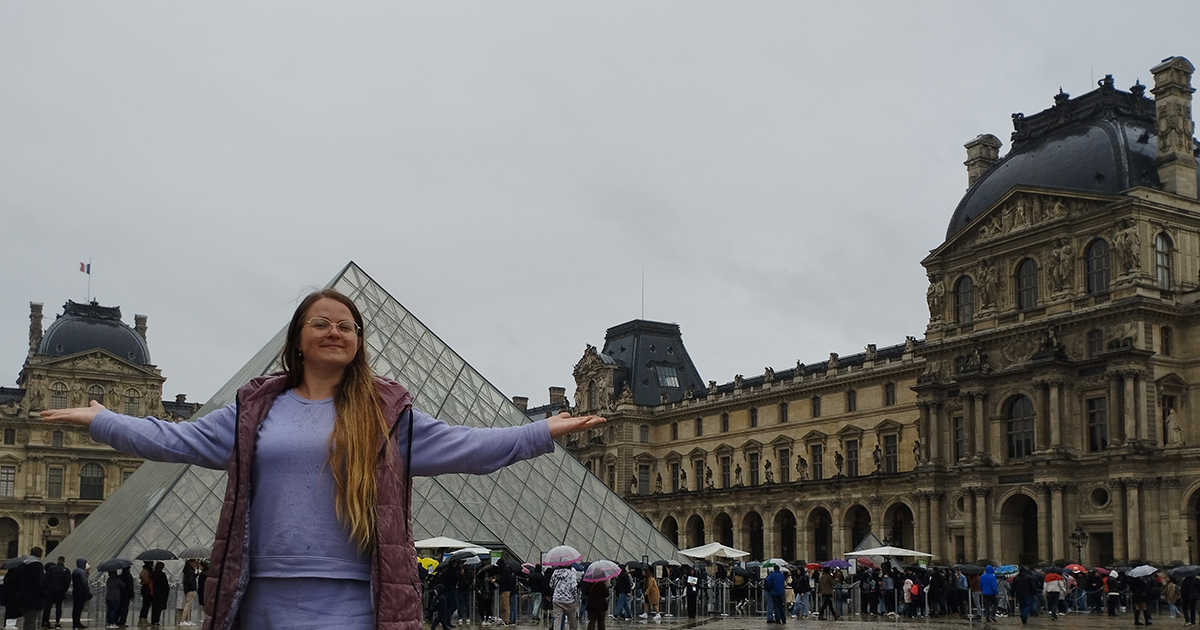My Louvre: A Personal Story at the Museum of Art
1. My Louvre: A First Encounter with a Legend
I have been drawing for as long as I can remember. Since childhood, I’ve been drawn to pencils, paints, outlines, and splashes of color. It was never a hobby — it was a calling. In art school, later in college, and eventually at the university of architecture, art became my element, my way of thinking, the language through which I communicate with the world. And ever since I was a child, somewhere far off in that world, there was the Louvre. I had heard about it long before I could ever imagine I might one day be there.
France, Paris, the Louvre — it all sounded like a fairytale. It felt like a completely different world, one far removed from our everyday Ukrainian reality. It wasn’t even a dream, but something nearly unreachable. But time passed, life changed, and so did I. And then one day, I found myself standing in front of the Louvre. Not in a dream, not in textbooks, not in prints — but in real life.
The moment I saw the museum building, it felt like a wave washed over me. My heart pounded faster, and I lost my breath for a second. It wasn’t loud or dramatic — on the contrary, everything around me seemed to slow down. I simply stood there and looked. The realization came quietly, deeply: I’m here. I’m really here.
That moment felt like meeting a legend you’ve known all your life — and finally seeing it with your own eyes. Although my visit hadn’t been meticulously planned, my heart had been ready for it for a long time. This was my dream — not loud, not childish, not naïve — but quiet, real. A dream that once seemed too distant to believe in. And now it became part of my life, my story.
For an artist, arriving at the Louvre is like meeting all your teachers at once. It’s a place where brushstrokes come alive, where shadows speak, and where colors sink into you in ways no book or image on the internet ever could. I felt my soul open wide, my eyes hungry to take in everything, my heart desperate to preserve every frame. The Louvre is awe-inspiring not only in its scale but in its silence. Here, art doesn’t shout — it breathes. And I breathed with it.
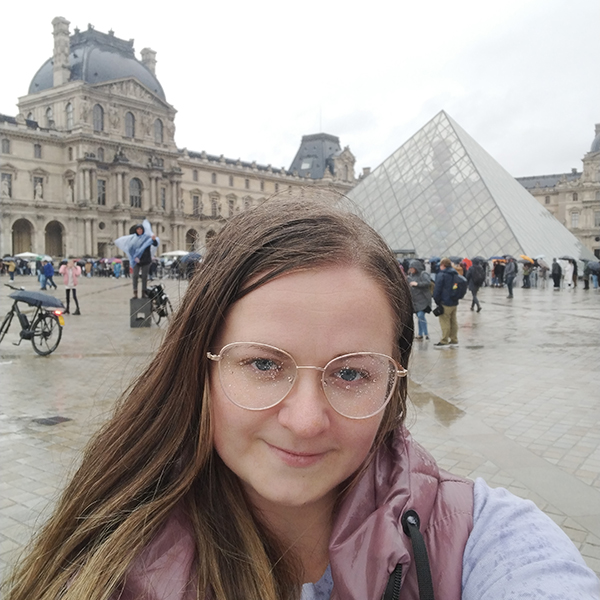
2. The History of the Louvre: From Fortress to Museum
Before diving into the world of masterpieces, I paused for just a few minutes — to feel the breath of history within the building itself. The Louvre is not just a museum in Paris. It is a place where every stone holds centuries. I’ve always believed it’s important not only to look at art, but also to understand the space in which it is kept. And the Louvre has its own deep, complex, and fascinating history.
Back in the Middle Ages, it was a fortress. French kings built the Louvre as a defensive structure — a symbol of strength and protection. Over time, it gradually transformed into a royal palace. I looked at the massive walls, arches, windows — and imagined monarchs, advisors, architects, and artists once walking these very halls. I’ve always been fascinated by the transformation of space: how a single building can live so many lives.
In the 17th century, after the royal court moved to Versailles, the Louvre slowly began to open itself to art. It was during the French Revolution that the building was officially turned into a national museum. This shift — from royal opulence to a public temple of art — inspires me deeply. It’s the moment when culture ceases to be a privilege of the few and becomes a shared human treasure.
It felt symbolic to me that the world’s most famous paintings are housed here: Mona Lisa, Liberty Leading the People, The Coronation of Napoleon... All of this gathered in one place is no coincidence. This is not just a collection — it is a concentrated essence of human history, expressed through images, lines, and colors.
I thought of Ukraine. We too have museums, rich collections, brilliant artists. But there’s still an inner barrier — the idea that “true” art lives somewhere out there, in Europe. But the Louvre teaches that the history of art is not only about masterpieces on walls — it’s also about spaces, lives, transformations. It has traveled a path from medieval fortress to global sanctuary of art. And I truly believe: each of us is capable of fulfilling our dream — even the one that once seemed far out of reach.
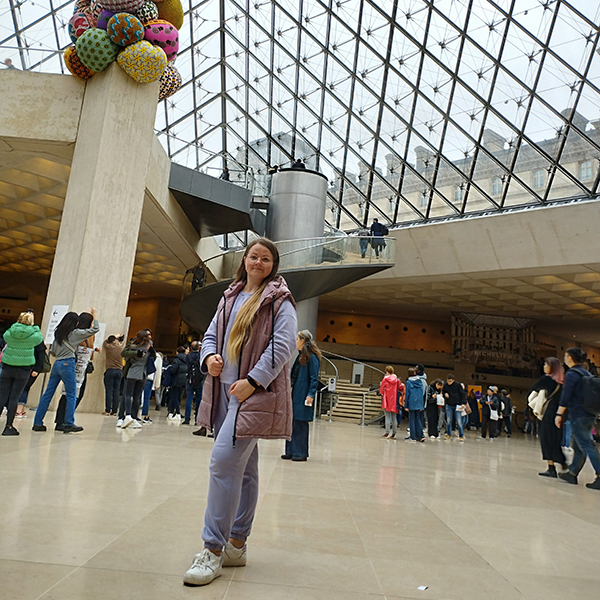
3. The Architecture of the Louvre: A Space Breathing Art
I’ve always had a keen sense of space. My architectural education taught me not only to see what is built, but to understand how and why it was built that way — and how a person feels within it. The Louvre impressed me not only with its artworks, but with the space itself — how it lives, breathes, and interacts with art. The architecture of the Louvre is a masterpiece in its own right, where stone, light, and air work together for a single purpose: to amplify emotion.
In the Louvre, eras quite literally collide. Medieval foundations, Renaissance façades, Baroque arches — all culminating in the modern glass pyramid by I. M. Pei. Standing in the main courtyard, I felt as if I were inside history. The pyramid, so precise and light, does not disrupt the harmony of the palace’s classical lines — on the contrary, it enhances their grandeur. It’s an architectural dialogue that inspires just as deeply as the galleries within.
When I entered the museum, the first thing I felt was how intentionally the space was designed. The vast halls don’t overwhelm — instead, they allow you to breathe. Every exhibit is placed in a way that gives the artwork room to “speak.” The lighting is soft, focused, with minimal shadows. Everything is devoted to the art. I spent several minutes simply observing how reflections shifted the mood of a sculpture, how the texture of a wall highlighted the depth of a painting. This is true professionalism.
I noticed how much space the Louvre provides for movement. The routes are well-planned: even with crowds, you never feel confined. And then — the silence. The architecture speaks in whispers. It doesn’t distract, it supports. I often think that space can either be an adversary or an ally to the artist. And in the Louvre, space is an ally.
For me — someone who is both an artist and an architect — the Louvre is a perfect example of how form serves meaning. It is a place where every wall, every column, every window is part of a greater artistic vision. And that’s why the experience of the museum begins long before you see your first painting.
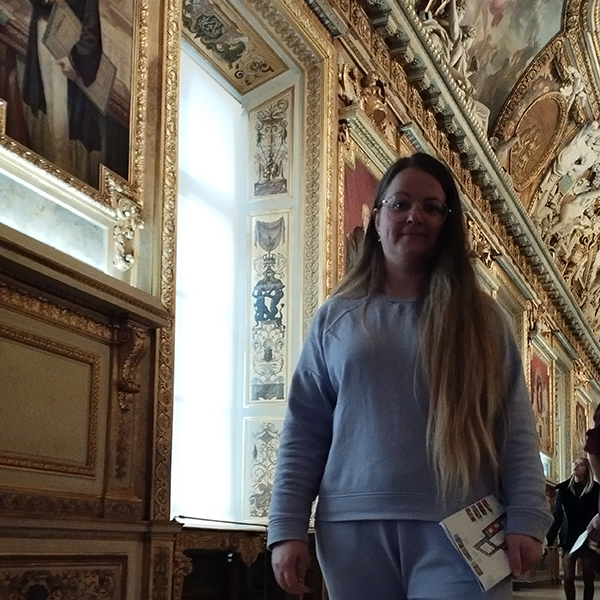
4. Navigating the Louvre: How Not to Get Lost Among Masterpieces
Visiting the Louvre is like stepping into an endless labyrinth, where every turn leads to another masterpiece. I knew the Louvre was enormous, but you only truly grasp its scale when you’re standing there, map in hand, unsure where to begin. My first instinct was to see everything at once. But very quickly, I realized: if you try to take in everything, you might end up feeling nothing at all.
I didn’t have a strict plan — my visit was more emotional than logistical. But deep down, I knew what I wanted to see: the iconic works I’d read about my entire life. Mona Lisa, Venus de Milo, Liberty Leading the People, Winged Victory of Samothrace — these images had been with me since school. And now, I had the chance to meet them in person.
I began with the Italian painting section — the heart of the Louvre. That’s where the Mona Lisa is, and naturally, there’s a steady stream of visitors heading her way. But along the path, there are dozens of other paintings just as worthy of being seen. I paused whenever something moved me — not by name, not by fame, but by emotion. Sometimes, I circled back — to a composition, a detail, a brushstroke.
What struck me was how intuitive navigating the Louvre can be, if you listen to yourself. I stopped where I felt drawn to stop. I moved on when something didn’t speak to me. It wasn’t about checking off boxes — it was a dialogue with the art. And though I had a map (I always take a paper one — it’s a quiet kind of reassurance), I let my gaze guide me rather than the layout. That’s when the strongest impressions emerged.
I often caught myself thinking, “This, I’d love to show my students. This — I want to keep in my heart forever. And here — I just want to be silent.” I came to believe that the right way to explore the Louvre isn’t the route where you see the most, but the one where you feel the most.
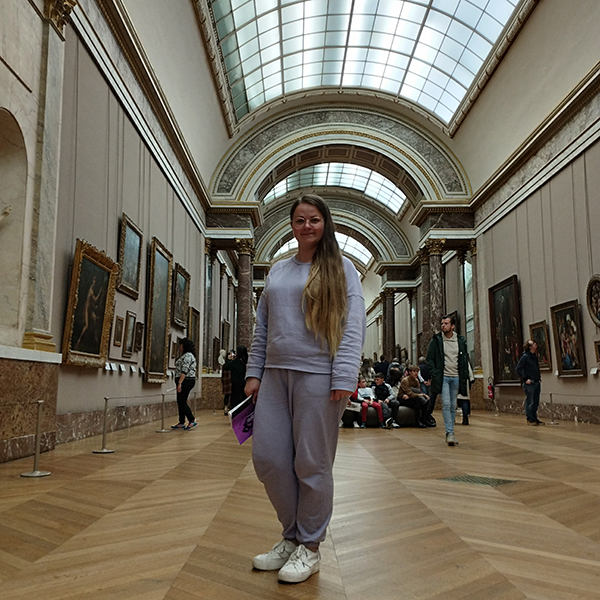
5. Mona Lisa and the Crowds: Silence Between the Gazes
Meeting the Mona Lisa was a chapter of its own in my visit to the Louvre. You don’t have to be a Da Vinci fan. You can even be skeptical of overhyped masterpieces. But when you enter the Salle des États, everything changes. It’s not just a painting. It’s a moment you’ve known all your life — and suddenly, it becomes real.
I approached her knowingly, fully aware there would be a crowd. And yes, the line to see the Gioconda is long. People queue up, lift their phones, take photos, some try to get a selfie. But amidst all that movement, there’s a profound stillness inside. I stood and waited my turn — not for a picture, but to look her in the eyes.
When I finally stood before her, I was struck by the size. The Mona Lisa is quite small — just 77 by 53 centimeters. But her presence is immense. She fills the space. Even the bulletproof glass protecting her doesn’t block that energy.
I looked at her as an artist — at the brushstrokes, the softness of the transitions, the texture. Leonardo didn’t just paint a portrait; he created an atmosphere. Those aren’t eyes looking at you — it’s you entering her gaze. And the longer you look, the harder it is to understand how it’s possible. How can such a small painting hold the attention of millions for centuries?
I noticed that people — even without realizing it — linger in front of her longer than they do with any other artwork. There’s something hypnotic in her smile. And I thought: maybe it’s not just that the Mona Lisa is “the most famous painting in the world.” Maybe it’s that she’s honest, calm — and somehow alive.
That moment — standing before an icon I had only seen in books and films — was, for me, a moment of absolute silence. Even in the midst of the crowd. And I’m grateful I had the chance not just to see her, but to feel her.
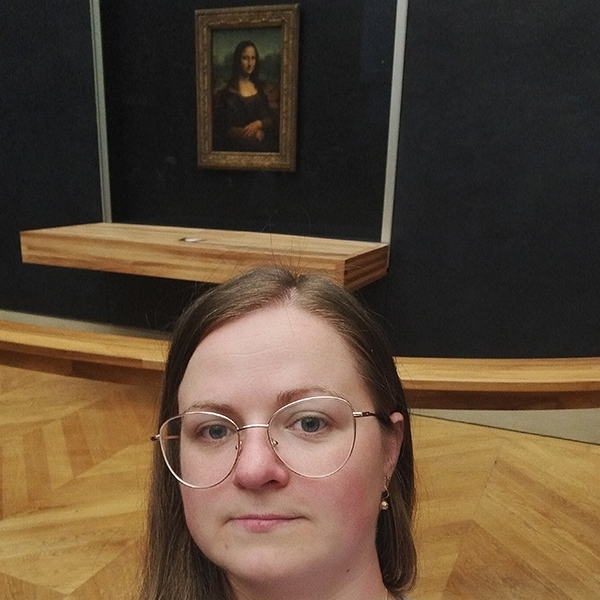
6. Louvre’s Paintings: Meeting the Geniuses I’ve Known All My Life
One of the most powerful moments of my time at the Louvre was realizing that I was seeing, with my own eyes, what I had read about, studied in art history classes, and pored over in albums since childhood. These paintings had been with me all my life — not just as decorations on pages, but as visual codes that shaped my taste, my thinking, my way of seeing the world.
And now they were right in front of me — not flattened in books, not pixelated on a screen, but real, alive, tangible. Canvases by Rembrandt, Vermeer, Jacques-Louis David, Delacroix, Ingres, Goya, Titian, Raphael… They breathe. Their colors are deeper, brushstrokes more defined, the gazes of their figures more piercing. I paused before each one — as if meeting someone I’d known for years, but was seeing for the first time.
When you look at these works in their true size, you don’t just see the subject — you see the artist’s decisions. How they work with shadow, how they shape composition, how they dare to use an unexpected color. I would sometimes step back to take in the overall form, then move in close to study the strokes. It felt like a kind of meditation — but a dynamic one. My eyes kept moving, my heart beat faster, and my mind tried to capture every detail.
I realized there’s no point in choosing a “favorite” painting. There are hundreds — and all of them are extraordinary. Each one is its own story, its own emotion, its own truth. Some I knew by name; others I discovered for the first time. But not a single one left me indifferent.
After several hours immersed in painting, I suddenly found myself in the galleries of ancient sculpture. And there she was — Venus de Milo. I had heard about her since I was a child, seen dozens of reproductions, articles, mentions. And though I expected to see her, I wasn’t prepared for her to feel alive. Her presence became the perfect conclusion to the painting section — a transition from image to form. And it was there that my deeper inner dialogue truly began.
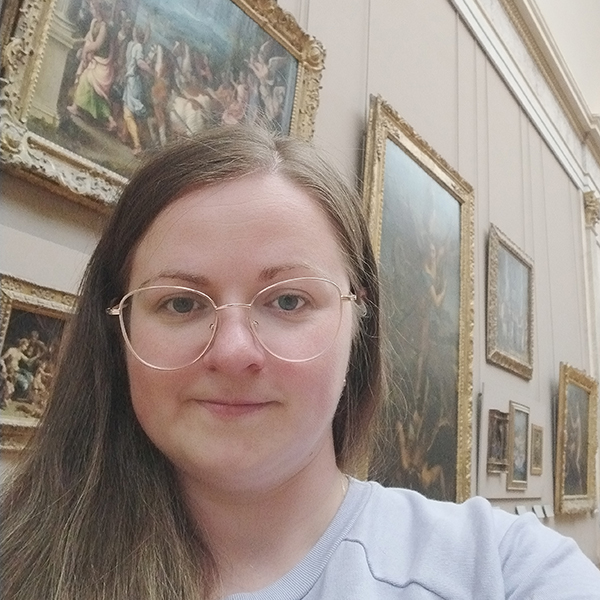
7. Sculptures, Silence, and Serenity: An Emotional Presence
When I stepped into the halls of ancient sculpture at the Louvre, everything seemed to slow down. After the vivid, multicolored world of painting, these spaces felt like a different reality — monochrome, distant, yet deeply alive. There were no bold canvases here, but there was form. Pure, powerful, perfect. And — silence.
At the center of that silence stood the Venus de Milo. I didn’t walk up to her right away. I stood at the far end of the gallery, simply looking from a distance. She seemed untouched by time. Armless, yet unbroken. Her posture, her gaze, her lines — all radiated calm, strength, and harmony. She doesn’t try to please. She simply is.
When I finally approached her, I couldn’t hold back a deep inner emotion. It wasn’t shock or awe — it was quiet reverence. She has stood there for centuries, and in that time, perhaps no painting has received as many gazes as this sculpture. But it’s not about fame. It’s about presence. She is a symbol of an ideal — unattainable, but endlessly worth striving for.
Every line is deliberate. Every volume, tangible. In that stone, there’s more than just a body. There is a stillness — the kind we so often lack in today’s world. And it was that stillness that spoke to me.
Nearby stood other sculptures — strong, expressive, dramatic. But I especially remembered David. Not for his perfect proportions, but for the moment captured — the tension just before action, when the decision has been made, but the movement has not yet begun. That sculpture speaks of willpower, of certainty, of the breath before the strike. I looked at him and thought how difficult it must be to convey such a state — not motion, but readiness.
I spent the most time in the sculpture galleries. Not because of the number of works, but because of the state they placed me in. It felt like an inner cleansing. I sensed the noise of the outside world fading, my thoughts becoming clear. In that silence, among those white forms, I remembered why I paint. And why art is not just a craft — it’s the language the soul uses to speak with eternity.
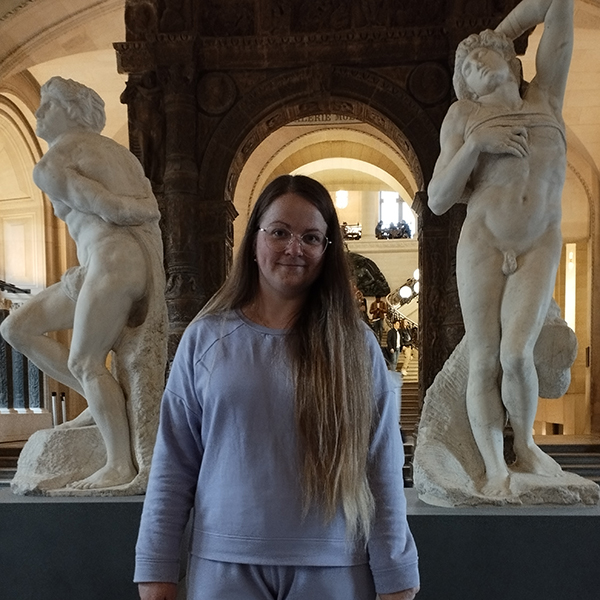
8. Eastern Art: Unexpected Sources of Inspiration
My route through the Louvre wasn’t strictly planned, but I knew I wanted to at least briefly explore the galleries dedicated to art beyond Europe. I didn’t have much time to linger here, but even a short acquaintance left a lasting impression.
Ancient Egypt, Mesopotamia, Persia, Islamic art — each of these cultures speaks in its own language, yet all of them touch on the eternal, on humanity, on beauty as a form of memory. I walked slowly, observing — as an artist seeing, for the first time, not an image in a book but a real artifact.
One piece that struck me deeply was the Seated Scribe — his vivid, piercing gaze seems to meet your own. This small artifact from the Egyptian collection has long been a symbol of the Louvre, and now I understand why. Another legend — the Code of Hammurabi — stands in the museum like a black-gray monolith, with entire epochs etched into its surface. To be near it is to feel close to the origins of law, justice, and human order.
I couldn’t pass by the winged lamassu — guardian bulls from Mesopotamia. Their monumentality doesn’t evoke fear, but respect. In their stillness, there’s a strength and calm that we, in our modern lives, so often seek.
A few steps further, and I found myself in the Islamic art gallery. Delicate ornaments, fragments of calligraphy, glass lamps, patterned ceramics — all of it striking in its precision and rhythm. I was especially inspired by the textiles with fine geometric designs — in them, I saw the same sense of order I so deeply admire in composition.
No, I didn’t have enough time to study every object. But even just a few minutes among artifacts that have survived for millennia felt incredibly special. It was a reminder that art isn’t only about form or technique. It’s about depth, context, and memory. And the Louvre, as a true world-class museum, gave me a chance — if only for a moment — to come close to cultures I had long known of, but never seen so intimately.
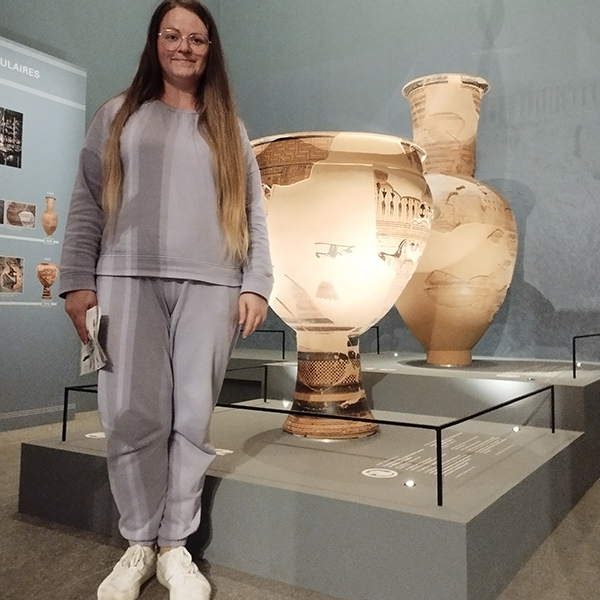
9. Rhythm and Ritual: Inspiration Between the Stops
After several galleries at the Louvre, I felt for the first time that I wanted to pause — not in front of a painting, but simply in the space. To rest. To sit. To breathe. At some point, the sheer number of impressions began to shift into a quality of silence. It wasn’t fatigue — more an inner need to absorb what I had felt.
I realized that, just like in art, rhythm is essential in a museum. You shouldn’t try to “consume” everything at once. You have to allow yourself pauses. A gallery, a painting, a gaze — then a stop. That became my personal ritual: walk slowly, feel, pause, remember.
I chose one of the interior windows where soft natural light filtered through, and just stood there. I listened to myself. Around me, others moved — some quickly, some with guides, some silently observing. And I thought: everyone here has their own Louvre. For some, it’s a travel milestone. For others, a childhood dream. For some — a professional journey. My Louvre was a meeting with those who had inspired me for years. It wasn’t just about seeing — it was about being with them.
These stops helped me feel the art more deeply. Often, true understanding doesn’t arrive in the moment of looking — but a little later, when your eyes have moved on, but your heart is still holding the image. I even began to jot down thoughts — briefly, in the margins of my notebook. Words, phrases, flashes. Because in a museum, as in creativity, everything passes quickly — unless you stop.
I loved that rhythm: movement — stillness, observation — reflection. It reminded me of working in the studio. You paint, and then — take a step back. Look. Be silent. Be. It is in those pauses that insight is born.
At the Louvre, I wasn’t just a visitor. I was part of a dialogue. And every pause was part of that conversation — with the art, with the space, and with myself.
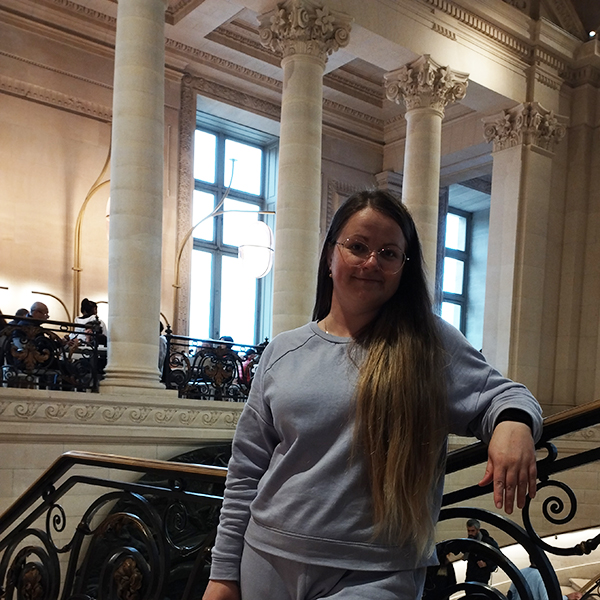
10. The Louvre Through an Artist’s Eyes: What I Took with Me
As I reflect on the Louvre, I realize that it left more in me than just impressions. It shifted something inside — a change of inner focus. This wasn’t the kind of experience where you simply feel “inspired” and move on — no. It was something deeper, something that will slowly grow roots in my work, my ideas, my vision.
I saw how details work. How in painting, it’s not just the subject that matters, but how it’s revealed: through light, color, contrast, space. I caught rhythms in sculptures, felt how matter speaks through form. I sensed a connection with generations of artists — how they looked at the world, what they wanted to say, what they feared. And that made me reflect even more deeply on my own language as an artist. On what I want to say to the world.
I’ve always been drawn to emotion in art — not always overt, sometimes restrained, but always sincere. At the Louvre, I saw how masters conveyed the complexity of the human condition through the simplest gestures: a tilt of the head, a half-glance, a shadow across the face. And it was that subtlety that touched me most. I understood that true strength lies in restraint.
The Louvre also reminded me: don’t be afraid of scale. Not in terms of canvas size — but of depth. When you are honest with yourself, the work comes alive. I saw this in every great piece — they weren’t about perfection, but presence. And that became a new compass for me.
I left the museum changed. Not tired, not just “inspired” — but focused. With clarity about what I want. To paint not only what is beautiful, but what is meaningful. What holds emotion, story, light.
The Louvre taught me to see not only art — but myself in art. And that, perhaps, is the most valuable thing I brought back with me.
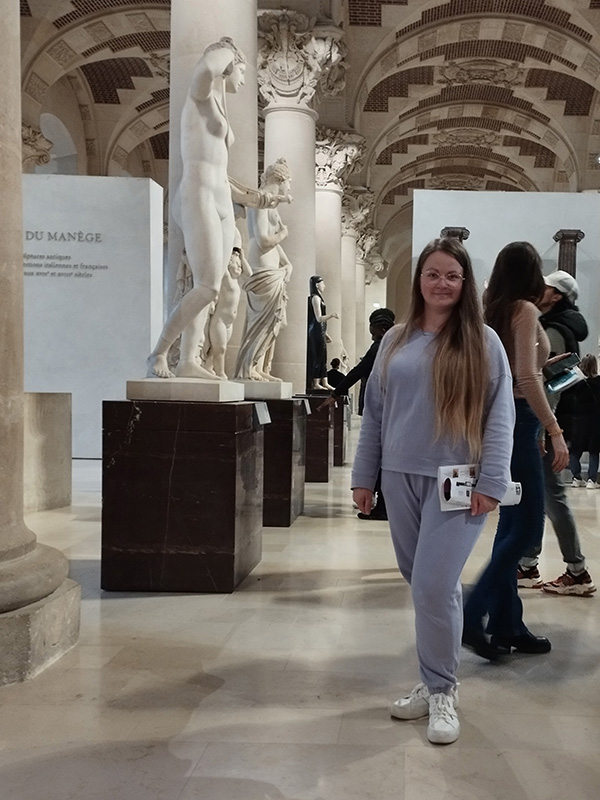
11. Tips for Those Planning a Visit to the Louvre
The Louvre is a place that leaves a mark on everyone who visits it. But to make sure that mark is deep and meaningful — rather than overwhelming — it’s important to prepare well. Here are a few things that personally helped me make this encounter with art not only emotional, but also comfortable.
1. Don’t try to see everything
The Louvre is enormous. Even if you spend an entire day there, it’s impossible to see it all. Choose themes or departments that interest you most — Renaissance painting, French classicism, ancient sculpture, Egyptian art — and explore selectively. It’s better to see less but deeply, than everything superficially.
2. Buy your ticket in advance
The Louvre is extremely popular. To avoid long lines, I recommend buying your ticket online with a time slot. It will save you time and stress. Tickets are available on the museum’s official website.
3. Take a museum map
Even if you love to wander aimlessly, a paper map or a navigation app is helpful. The Louvre is a true labyrinth. It’s good to have a sense of direction — especially if you want to see specific pieces (like the Mona Lisa, Venus de Milo, or the Code of Hammurabi).
4. Dress comfortably
It may sound obvious, but comfortable shoes are a must. You’ll walk a lot, and it helps when your body doesn’t distract you from the art.
5. Take breaks
Don’t hesitate to sit, pause, and just look around. The Louvre isn’t a place to rush through. Give yourself permission to be still.
6. Don’t just photograph — look
I took a few pictures for memory, but most of the time, I simply looked. A camera can’t capture what your eyes truly feel. Especially in front of masterpieces — it’s better to focus on the moment than the frame.
7. Leave room for the unexpected
Even if you have a plan — allow yourself to turn aside, to enter an unfamiliar gallery. In the Louvre, it’s often the spontaneous detours that lead to the most beautiful discoveries.
This museum is a true city of art. Whether you’re an artist, an admirer, or simply a curious soul — it will leave a trace in you. And don’t be afraid: this is not a museum “for the chosen few.” It’s a space open to anyone who wants to see, feel, and understand. And also — to dream.
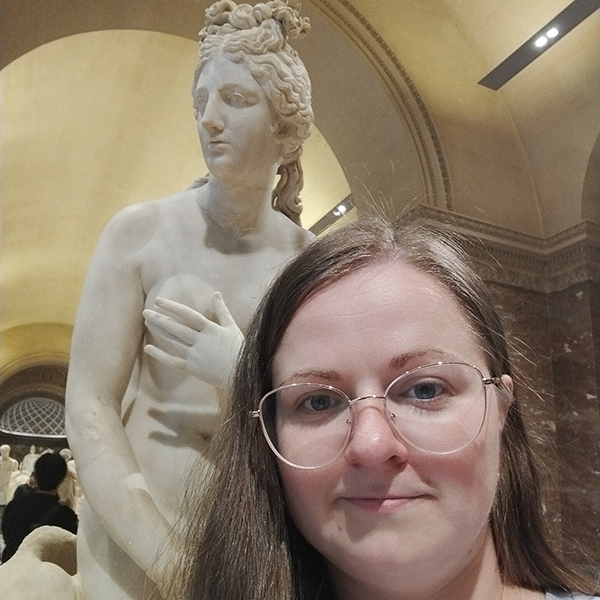
12. Epilogue: A Moment That Stayed With Me
In every great museum, there’s a moment that stays with you forever. It’s not necessarily the most famous exhibit, the grandest hall, or the first burst of emotion. It’s a quiet stillness that suddenly appears amidst the crowds, the sounds, the paintings, the impressions. In the Louvre, I had that moment.
I was standing by one of the windows, watching a gray, slightly rainy Parisian day slowly sink into dusk. The light was soft, almost watercolor-like. Now and then, raindrops touched the glass, and everything around me felt gentle, slowed. It wasn’t a postcard from Paris, not a perfect day — but in that restraint, there was beauty. Quiet, mature, real.
In my ears, echoes of the gallery still lingered — the face of the Mona Lisa, the curves of Venus, the patterns of Eastern art. But inside me, there was calm. I realized I had experienced more than just a museum visit. It was a meeting with myself — with the little girl who once drew in her notebook, who listened to stories about the Louvre and was too shy to even imagine she’d one day be there.
This visit wasn’t a plan or a checkpoint on a trip — it was a dream come true. Quiet, mature, unexpected. And at the same time — inevitable. Because art always leads us to where we’re meant to be. I didn’t leave the Louvre simply with impressions — I left with a new vision. With light that is born even on gray days. With the peace that only something truly real can leave behind.
And now, when I sit at my easel, that moment still lives in my memory: the silence between galleries, the rain beyond the window, and the eternal art that became part of my inner world.
Because true encounters — they don’t depend on the weather. And they never really end.
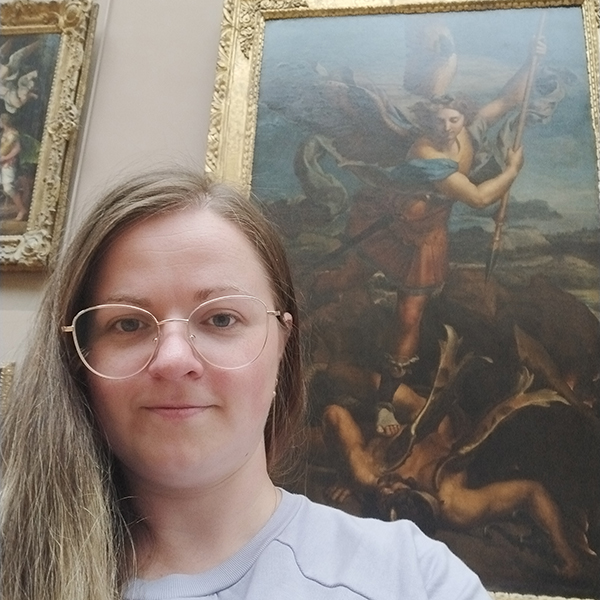
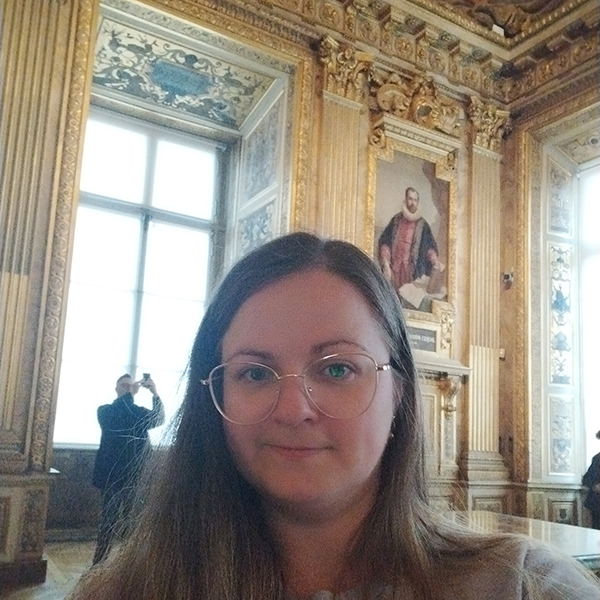
This article is more than just a visit to a museum. It’s a heartfelt story about dreams, art, and the light that awakens within. If it resonates with you – share it with those who are inspired by beauty.

